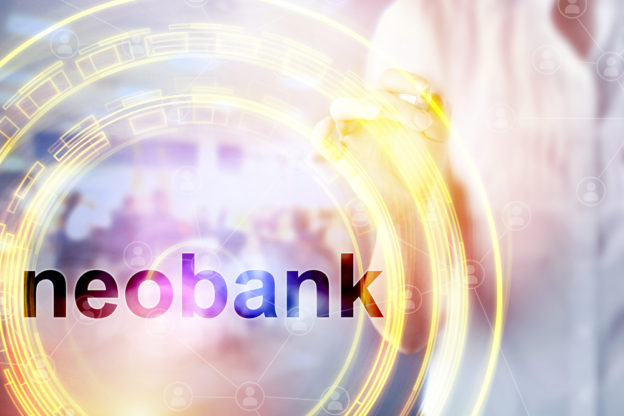There was a time when we had to knock on a bank’s doors to move a penny from one account to another. Cheque leaves ruled, lockers were a privilege, and the long queues to get something done, common. Our parents probably still believe in this offline mode of a transaction as they find this method secure while transacting online is often deemed ‘unsafe’ or ‘unreliable’.
Fast forward a few years, can you now imagine having an account in a bank that has no physical branches or one that operates exclusively online?
Today, let us discuss Neobanks that are a new fintech entrant rising favourably in India.
What is a Neobank?
A hotly discussed topic in the fintech industry, neobank is making waves in terms of how people perceive banking as a whole. A Neobank is a new-age bank that provides financial services to customers but operates online and has no physical existence anywhere. These services could vary anywhere from payments, money transfers to lending. Some of the finest neobanks in the country include Niyo, Open, and RazorPayX.
A neobank has no bank license of its own to operate and instead relies on already accredited banking partners for licensed services. Neobanks work under considerable constraints while working in the Indian ecosystem. Whereas, globally, Singapore and UAE have started to roll out digital licenses for neobanks to function autonomously.
Indian Landscape through a Kaleidoscope
India has never shied from making the most talked-about reforms and striking decisions to drive the fintech industry forward. UPI by NPCI – National Payments Corporation of India, for instance, is a model that’s received acclaim worldwide and which many countries, such as UAE, are pursuing ambitiously.
With reforms such as setting up the Account Aggregator system, traditional financial institutions have finally got that bridge to connect with technology, bypass legacy-infrastructure hurdles, and match gen-Z customer expectations. This is precisely one of the key areas where neobanks shine.
While the complete-online existence helps neobanks to cut down on operational costs, the adoption of cutting-edge technology is an easy route to customer acquisitions. Neobanks require traditional banks by their side to handle customers’ money, and for the banks, it becomes easier to acquire new customers.
Neobanks: POV of SMEs & Consumers
In most cases, digital banking could be like a watch pot that never boils – the broken interfaces and multiple steps to get something done; makes it worse. The expectations are clear for millennials and gig economy folks; financial institutions have to step up to match what consumers expect- banking at their fingertips and being mobile-ready.
Neobanks come as a breath of fresh air for consumers in this case. As chatbots take over to provide uninterrupted customer service round the clock, many neobanks are adopting machine learning and artificial intelligence to augment customer experience and the overall personalization factor.
On an SME front, businesses struggle to incorporate finance into their everyday offerings. According to reports by the World Bank, SMEs have been underserved by traditional banking institutions. The long-drawn procedures with legacy institutions and the hassle of being compliant-ready are no child’s play. It’s best not to go into lending & disbursals.
However, neobanks, by being the intermediary, could resolve quite a lot of challenges for business right from lending and disbursals, payment collection process, reconciliations, to user onboarding.
With the use of innovative fintech solutions, including API Integrations, neobanks are providing the following value-add that is helping them grow exponentially:
Digital Onboarding & Account Creation
The digital nature of neobanks makes account creation and onboarding customers hassle-free and smooth. Any user can employ the neobank’s application to create a new account in a matter of minutes and at their comfort. By integrating with API banking fintech, compliance checks and user verification via KYC are carried out seamlessly. Not just that, these processes can be automated to save time & effort via unified API endpoints.
Payments & Money Transfers
Most traditional banks levy a heavy percentage of fees for overseas transactions. However, a neobank removes the forex markups, a charge levied during currency conversions, in international payments. In addition, neobanks can leverage API banking to facilitate effortless & instant digital money transfers across payouts- without any cooling periods and with easy beneficiary additions.
Accounting & Automated Reconciliation
Most businesses have to spend hours behind payment reconciliation, running statements through a fine-toothed comb to tally all expenses and transactions. Even then, the chances of errors are super-high. Neobanks help to automate this bookkeeping process using virtual accounts. Each of these virtual accounts has an account number that allows neobanks to track and identify the source. The best part about the process is that it can be automated and connected with their existing ERPs and dashboards while being trackable in real-time.
SME Lending
The relationship between SMEs and traditional banks isn’t something you’d call ‘peachy.’ It’s a cumbersome process for banks to evaluate the credit history of an SME to pass or reject them for a loan. This gap exists at large and seems to be only increasing each day. With the entry of a neobanks, the assistance with the credit-underwriting process resolves this pain point; they help to connect a consumer to the correct lender. With Open Credit Enablement Network or OCEN-enabled API services, neobanks can manage loans in bulk, automate payouts, and set collection mandates.
Overall, the growth of neobanks, accelerated by the pandemic and need for social distancing, is unstoppable. Providing a financially inclusive environment to the unbanked of nearly 190mn as per the World Banks’ Global Findex Report, India will be the favourite spot for neobanks.
https://www.outlookindia.com/outlookmoney/amp/fintech/rise-of-neobanks-in-india-6862





